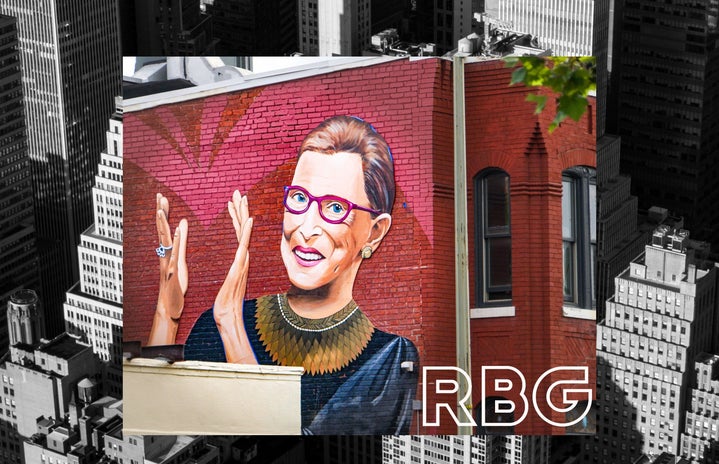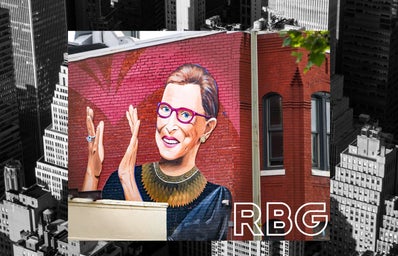With the passing of Ruth Bader Ginsburg on September 18th, 2020 comes the grief of an entire country. The influential and powerful RBG leaves behind a legacy of change and empowerment, something that is not soon to be forgotten. Justice Ruth Bader Ginsburg was setting a precedent for change before she even graduated college and it’s something she continued to do for the rest of her life. The impact she created during her fight against the discrimination on the basis of sex and her time as the second woman to become a Supreme Court Justice will continue to be felt as we try and find our way through this new decade and as we maintain the fight for women’s rights.

Ginsburg was a pioneering advocate for women’s rights starting in the 1960s, something she could advocate well for as she was a woman making her way through a “man’s world”. She took it upon herself to fight against the gender discrimination that was all around her. She graduated at the top of her class at Cornell University and enrolled at Harvard Law, all while starting and raising a family, some of which she did alone while her husband, Martin, was drafted for military service. Harvard was dominated by men and Ginsburg’s place there proved to irritate even the highest authorities, but despite that, she became the first female member to serve on the Harvard Law Review. She ended up spending her last year of law school at Columbia Law School where she graduated at the top of her class in 1959. She was already showing the world that a woman could do anything a man could, and she could do it while balancing motherhood and law school.
However, just because Ginsburg was doing her best to persevere didn’t mean the gender-based discrimination wasn’t continuing to make things more difficult for her. When she began to be offered some jobs at law firms, she was being offered jobs that would always have a much lower salary than the same exact jobs that were being done by men. Ginsburg decided, instead, to pursue her interest in civil procedure and spent time abroad until she accepted a job at Rutgers University Law School in 1963, and then, in 1972, she accepted an offer at Columbia and eventually became the first woman there to earn tenure. It was during this time that she really began leading the fight against gender discrimination.
Ginsburg founded the Women’s Rights Project of the American Civil Liberties Union (ACLU), which worked to fight against gender discrimination and advocated for all women. During this time, Ginsburg fought not only for the women who were at a disadvantage, but for men who were being discriminated against as well. She wasn’t just fighting for women’s rights; she wanted to combat the entirety of gender discrimination, that meant looking to both sides of the spectrum. Today the Women’s Rights Project focuses on women’s rights in the workplace, violence against women, criminal justice, and education. This project has adapted with time to continuously focus on what is most necessary concerning women’s rights, something Ginsburg would be proud of.
1980 became a turning point for Ginsburg as she joined the U.S. Court of Appeals for the District of Columbia by appointment of Jimmy Carter, which then led to her appointment to the Supreme Court of the United States in 1993. In her new position, Ginsburg continued to fight for women’s rights. She had been an advocate, but now she had the power to really make change happen. She used her power to target specific areas of discrimination and women’s rights one at a time, rather than attacking head on and trying to take on too much. In doing this, she made it evident to legislatures what would and would not be allowed. Throughout her time as a Supreme Court Justice, Ginsburg was making moves that helped to interpret the law and pass legislation such as the Lilly Ledbetter Fair Pay Act of 2009. This became the first piece of legislation President Obama signed in office and helped to continue the fight against discrimination of compensation in the workplace. During her term, Ginsburg participated in cases that have affected the course of history and have made change possible, showing us she truly was a force to be reckoned with.
When you think about the opportunities that women have today, it’s nearly impossible to not also think of RBG and the change she helped bring. Ginsburg showed the world all that women are capable of, during a time when it was thought that women had no business doing certain things such as going to law school or holding a position of authority. But because of Ginsburg, the people she worked with, and those she empowered, we can see the change that has occurred, and we can see the change that is still happening. While we by no means live in a perfect world, we can see the empowerment that has lifted women to become powerhouses, influential figures, business owners, and so much more. If this has at all motivated you to want to know even more about the force that was Ruth Bader Ginsburg, I encourage you to watch the 2018 film, On the Basis of Sex, which does an amazing job of illustrating and showcasing the empowerment Ginsburg encompassed and the changes she helped set into motion. We might have lost an icon, but we have the opportunity to keep striving for change, looking back on all that Ginsburg has done in order to keep moving forward.


